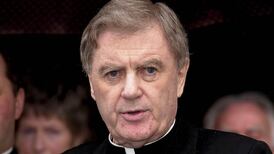Seán Ó Cinnéide:SEÁN Ó CINNÉIDE, who has died aged 86, was a former professor of inorganic chemistry at University College Galway. He previously worked at Harwell, Britain's first atomic energy research establishment.
He first made his name when as an undergraduate he discovered a chemical reaction now known in scientific circles as the “Kennedy/Dillon reaction”.
Many years later, in 1978, he delivered the annual Oireachtas na Gaeilge lecture.
In Nuclear Energy – Facts and Fallacies, he declared his support for the government proposal to build a nuclear power station at Carnsore Point.
His interests were varied. While at Harwell, he frequently visited the Celtic library at Oxford University, investigating subjects that fascinated him: the origin of the Irish language; the true meaning of the word “Gaeilge”; early Irish and Celtic history; and, above all, why the Irish Celts were called Q Celts while others were known as P Celts.
He had an insatiable desire to solve historic and linguistic riddles, and he searched endlessly for answers.
It is now accepted that the division of the Celtic languages into Q and P families depends on whether they retained the Indo-European “qu” sound (usually represented by a c or k) or substituted a “p” sound. Scholars are generally agreed that the substitution of “p” for “qu” spread from central Europe to the west in the first millennium BC, but not as far as Ireland or the Celtic areas of the Iberian peninsula. Thus the word for head is pen in Brythonic (British Celtic) languages, but ceann in Irish.
Born in Na Cluainte, Baile an Fheirtéaraigh, Tráighlí, Seán Ó Cinnéide was one of six children of Michael Kennedy and his wife Mary Brigid (née Granville).
Educated at Scoil an Fheirtéaraigh and Dingle CBS, he won a scholarship to UCG where he studied science, with special emphasis on inorganic chemistry, under Prof Thomas Dillon.
On graduating with a first class degree, he accepted a temporary teaching post in Coláiste Éanna, Galway. But he found teaching at second level unfulfilling, and decided to spread his wings and travelled across the Irish Sea.
He first secured a post working in the laboratory of a sugar factory in King’s Lynn on the east coast of England.
Subsequently, he successfully applied for the position of junior scientific officer at Harwell.
His career quickly took off, and he was appointed senior scientific officer under Sir John Cockcroft, who shared the 1951 Nobel Prize for physics with Ernest Walton of Trinity College Dublin.
He carried out some outstanding research which helped him secure his doctorate.
When the chair of inorganic chemistry at UCG became vacant, he successfully applied for the post and returned to his alma mater, where he was to remain until his retirement in 1987.
In 1969 he was a recipient of one of the first National Science Council awards.
In addition to his scientific work and research with his students, he continued his explorations of early Irish and Celtic history.
His study of Irish place names and their true meaning led him to regard most Anglicised versions as utter travesties.
He published his findings in the Irish-language educational journal Feasta, and lectured extensively.
He had a strong attachment to his native place, its inhabitants, language and customs.
To relax, he liked nothing better than to return to west Kerry, to reconnect with his roots and enjoy the craic with old neighbours and new friends.
Known for his sociable nature, he nevertheless observed a strict work regime to the end.
His wife Máire (née Ní Shúilleabháin), daughters Máire and Breeda, and sons Finbarr, John and Donncha survive him.
Seán Ó Cinnéide: born September 29th, 1922; died August 25th, 2009







